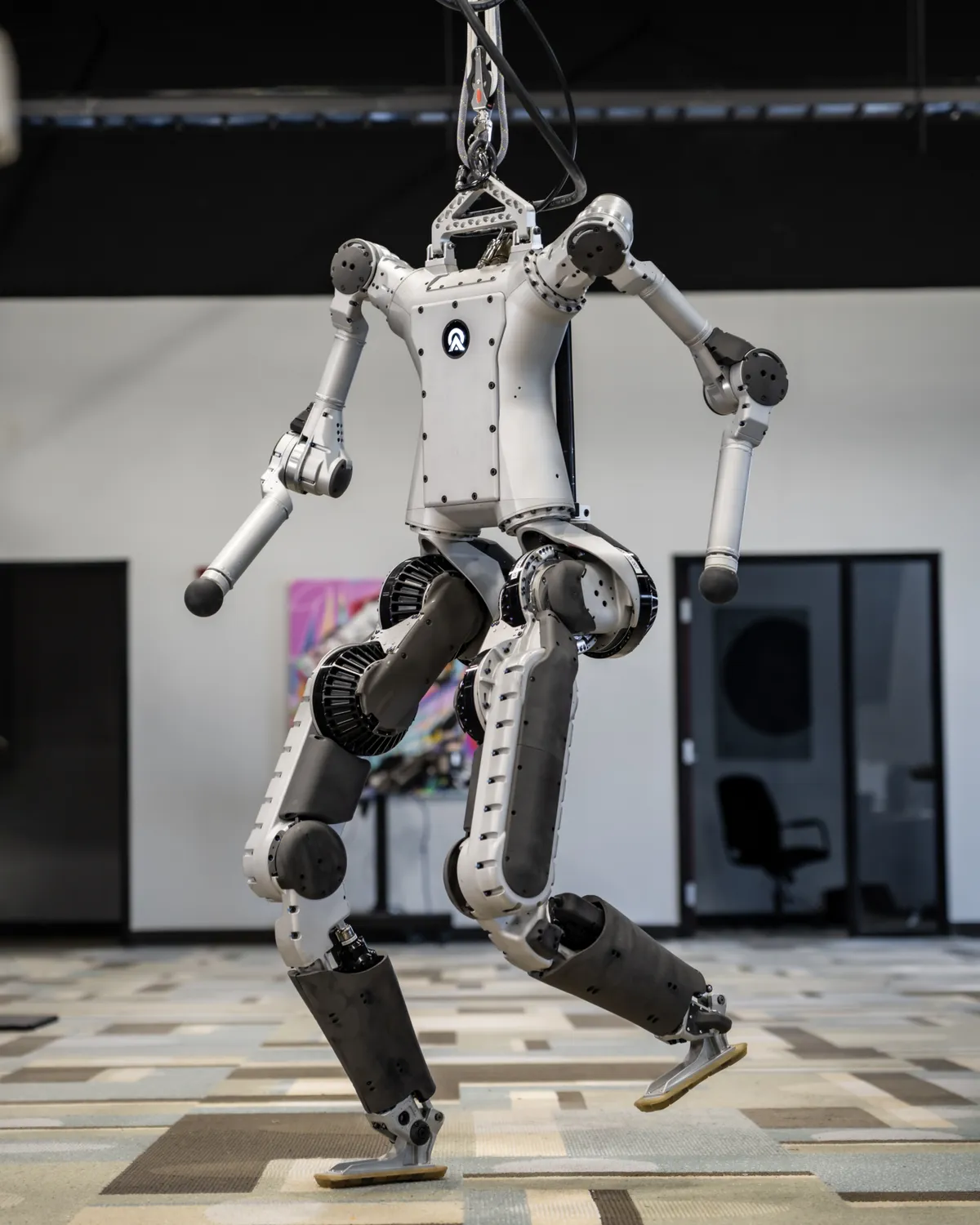Blog Credit: Trupti Thakur
Image Courtesy: Google
Apollo
Apptronik, a robotics startup based in Austin, has introduced a humanoid robot named Apollo designed to collaborate with humans. Standing at 5 ft 8 inches and weighing 72.6 kilograms, Apollo can safely work alongside humans, handling up to 25 kilograms of weight. The robot features an approachable design, with a digital panel on its chest providing task updates, estimated completion time, and future actions.
Powered by electricity with a four-hour battery life, Apollo’s intentional movements mimic human gestures. Apptronik’s goal is to create versatile robots that perform tasks beneficial to humans, both on Earth and in space exploration. The startup has developed actuators that allow Apollo to walk, grasp objects, and flex its arms, akin to human muscles.
We’ve seen impressive developments in humanoid robots over the last few years. Elon Musk and Tesla introduced the Optimus robot last year, and every few months Boston Dynamics teaches its Atlas robot a few new tricks. Next month at South by Southwest, a Texas-based startup will reveal to a small group its take on a general-purpose robot.
Apptronik calls its newest robot Apollo, in part because it partnered with NASA on commercializing the robot. Though there aren’t plans to send Apollo to space, the space agency wants to encourage the development of humanoid robots that could one day lead to a robotic space-explorer. We haven’t seen any official images of Apollo, but Apptronik has released several videos over the past few weeks showing off some of its prototype robots that ultimately helped lead to Apollo’s design.
“Apollo is the robot that we’ve always wanted to build,” CEO Jeff Cardenas told CNET. “We’ve designed the whole world for the human form. Having a robot that’s the same footprint as a human and can use all the same tools that we use and fit in the same places, is incredibly useful.” Watch the video above to hear more from Cardenas and learn more about Apollo.
What is the key focus of Apptronik’s humanoid robot, Apollo?
Apollo is designed to collaboratively work alongside humans. Its approachable design, intentional movements, and task communication panel aim to facilitate seamless interaction between the robot and its human counterparts.
How does Apollo mimic human movements?
Apollo’s actuators emulate human muscles, enabling the robot to walk, grasp objects, and move its arms like a human. The goal is to simplify 30 muscle groups to mirror human-like actions.
How does Apollo’s perception system contribute to its functionality?
Apollo’s head is equipped with perception cameras, while its torso houses sensors that map a 360-degree view of its environment. These sensors facilitate decision-making for movements and maintain orientation while in motion.
How does Apollo’s digital panel enhance its usability?
Apollo’s chest-mounted digital panel informs users about ongoing tasks, estimated completion times, and upcoming actions. This feature enhances user understanding and interaction with the robot’s tasks.
What are Apptronik’s aspirations with Apollo’s technology?
Apptronik aims to create versatile robots that can assist humans on Earth and potentially play a role in space exploration on the moon, Mars, and beyond, showcasing the ambition to advance robotic capabilities.
How does Apollo’s design contribute to its safety when working with humans?
Apollo’s design emphasizes safety while collaborating with humans. Its intentional movement, weight-handling capabilities, and task communication ensure that it can work alongside humans without posing risks.
Blog By: Trupti Thakur

28
AugApollo
Aug 28, 2023Recent Blog
The ITES-QApr 17, 2025
The UPI Circle Of PhonePeApr 16, 2025
Dangerous AI In HealthcareApr 15, 2025
Google’s Iron Wood ChipApr 14, 2025
World’s First 3D Printed Train StationApr 11, 2025




